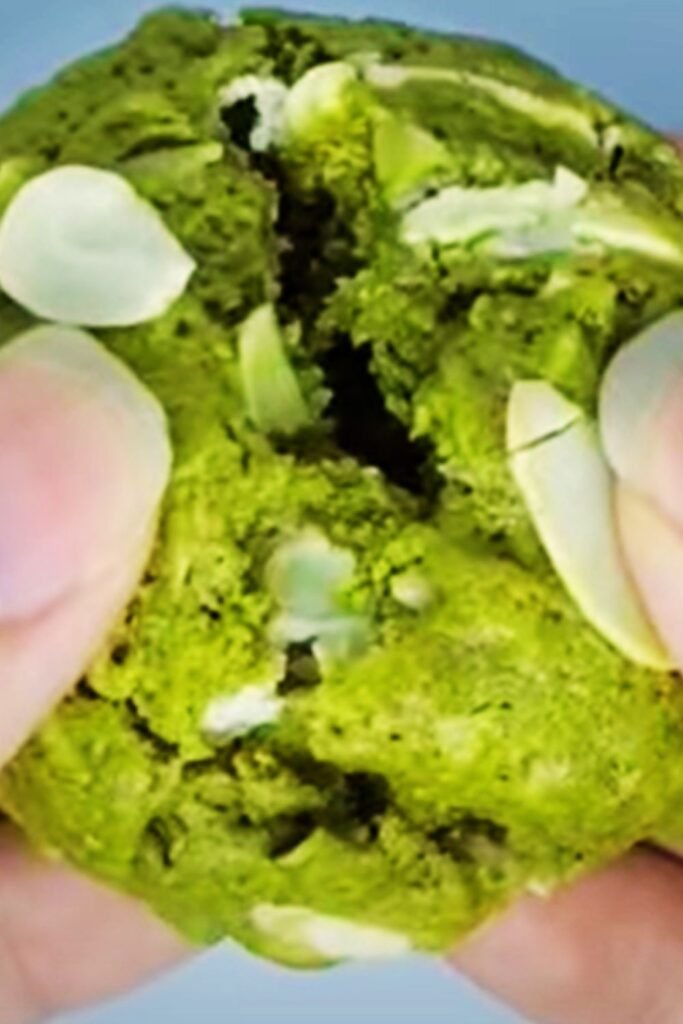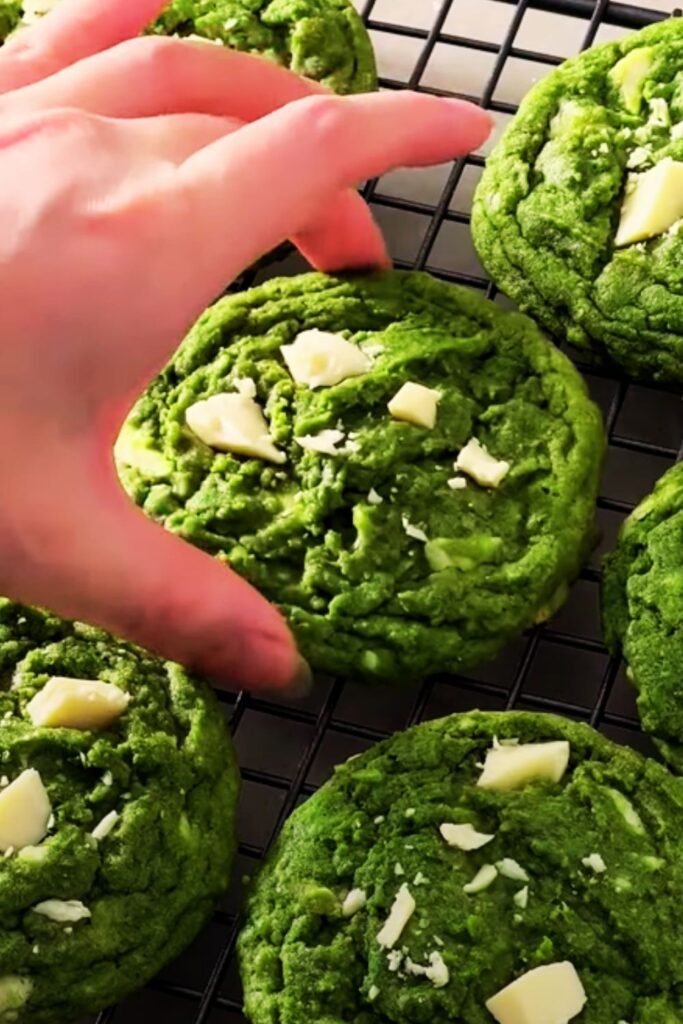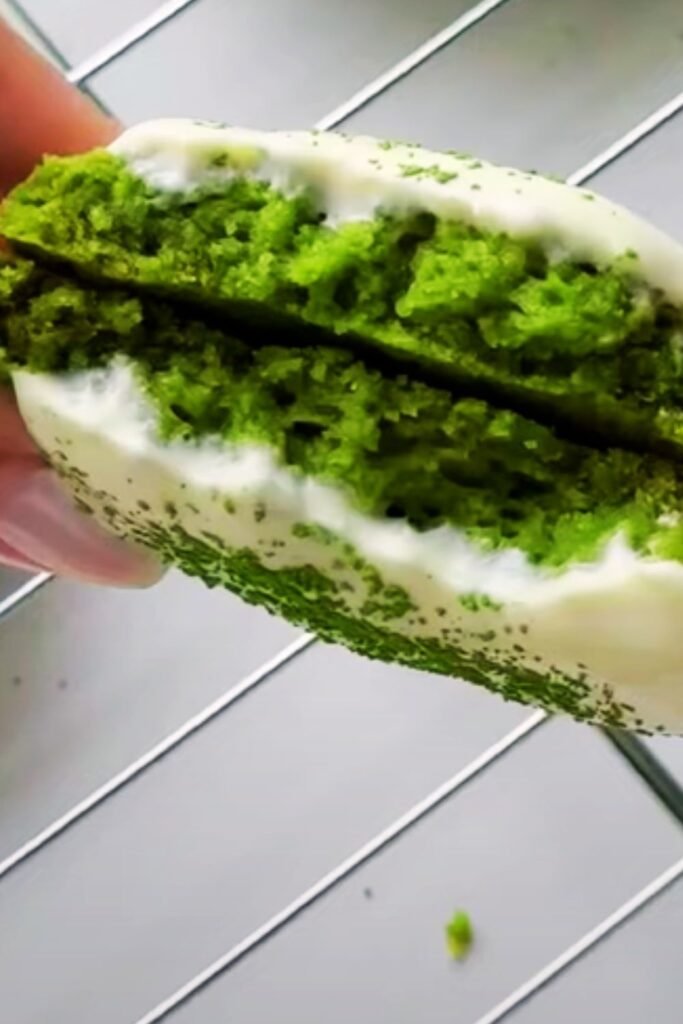I still remember the first time I bit into a matcha cookie in a tiny bakery tucked away in Manhattan’s East Village. The earthy, slightly bitter notes of ceremonial-grade matcha dancing with creamy white chocolate created a flavor symphony that completely changed my perspective on what cookies could be. That moment sparked my obsession with creating the perfect matcha, cashew, and white chocolate cookie – a treat that embodies the sophisticated palate of New York City while honoring traditional Japanese flavors.
These aren’t your average chocolate chip cookies. My matcha, cashew, and white chocolate NYC cookies represent the beautiful collision of cultures that makes New York so special. The umami-rich matcha provides an sophisticated base, while roasted cashews add an unexpected crunch and nutty depth. White chocolate brings sweetness without overwhelming the delicate tea flavor, creating a cookie that’s both familiar and exotic.
Understanding the Soul of Matcha Cookies
Matcha – Finely ground powder made from specially grown and processed green tea leaves, primarily from Japan’s Uji region Ceremonial Grade Matcha – The highest quality matcha with vibrant green color and smooth, non-bitter taste Culinary Grade Matcha – More affordable matcha specifically designed for baking and cooking Umami – The fifth taste, characterized by a savory, earthy flavor that adds complexity to sweet treats
The secret to exceptional matcha cookies lies in understanding matcha’s temperamental nature. Unlike cocoa powder, matcha can become bitter when exposed to high heat for extended periods. I’ve learned through countless batches that the key is balancing temperature, timing, and the quality of your matcha powder.
During my early experiments, I made the mistake of using low-grade matcha from the grocery store. The results were disappointing – muddy green cookies with an overpowering grassy taste. Investing in quality ceremonial or high-grade culinary matcha transformed my cookies from amateur attempts to bakery-worthy treats.
The Perfect Ingredient Symphony

Creating the perfect matcha cookie requires understanding how each ingredient contributes to the final product. My formula has evolved through years of testing, guided by feedback from friends, family, and my own relentless pursuit of the ideal texture and flavor balance.
Essential Ingredients Breakdown
| Ingredient | Purpose | Quality Tips | Substitution Notes |
|---|---|---|---|
| Ceremonial Grade Matcha | Primary flavor, vibrant color | Look for bright green powder without clumps | Culinary grade works but reduces flavor intensity |
| Raw Cashews | Nutty crunch, richness | Choose whole, unblemished nuts | Macadamias or blanched almonds work well |
| White Chocolate Chips | Sweetness balance, creamy texture | Avoid artificial chips; use real cocoa butter | White chocolate chunks create better distribution |
| European Butter | Fat content, flavor depth | Unsalted, 82% fat content preferred | Can substitute with high-quality margarine |
| Organic Cane Sugar | Structure, sweetness | Fine crystals dissolve better | Brown sugar adds molasses notes |
| Large Eggs | Binding, moisture | Room temperature for better incorporation | Cannot substitute effectively |
| Vanilla Extract | Flavor enhancement | Pure extract, not imitation | Vanilla bean paste adds visual specks |
| Sea Salt | Flavor amplification | Fine grain, not table salt | Enhances all other flavors |
The ratios matter tremendously. Too much matcha creates bitterness, while too little results in cookies that taste like vanilla wafers with green food coloring. I’ve found that 2 tablespoons of high-quality matcha per 2 cups of flour creates the perfect balance.
My Perfected Recipe Method
After baking these cookies hundreds of times, I’ve developed a technique that consistently produces cookies with chewy centers, slightly crisp edges, and that beautiful pale green color that screams “matcha” without looking artificial.
Step-by-Step Process
Preparation Phase:
- Toast cashews in a dry skillet for 3-4 minutes until fragrant
- Sift matcha powder twice to eliminate any lumps
- Bring all ingredients to room temperature (this is crucial)
- Line baking sheets with parchment paper
Mixing Technique:
- Cream butter and sugar for exactly 4 minutes – this creates the perfect texture
- Add eggs one at a time, beating until just incorporated
- Combine dry ingredients in separate bowl before folding into wet mixture
- Fold in cashews and white chocolate chips last
Temperature and Timing Precision
| Baking Stage | Temperature | Duration | Visual Cues |
|---|---|---|---|
| Preheating | 325°F | 15 minutes | Oven thermometer confirms accuracy |
| First Batch | 325°F | 11-12 minutes | Edges set, centers still soft |
| Cooling on Pan | Room temp | 5 minutes | Cookies firm up gradually |
| Wire Rack | Room temp | 15 minutes | Complete cooling prevents breaking |
Lower temperatures preserve matcha’s delicate flavor while ensuring even baking. I learned this lesson after destroying several batches at higher temperatures, resulting in burnt edges and bitter centers.
Mastering the NYC Cookie Aesthetic

New York City cookies have a distinct personality – they’re substantial, never precious, and pack serious flavor into every bite. My matcha cookies embody this spirit while maintaining the elegance that matcha deserves.
The secret to achieving that perfect NYC cookie look lies in the scoop size and spacing. I use a 2-ounce ice cream scoop for consistent sizing, placing cookies 3 inches apart on the baking sheet. This allows for proper spreading without the cookies merging into one giant green mass.
Texture Troubleshooting Guide
| Problem | Likely Cause | Solution |
|---|---|---|
| Cookies spread too much | Butter too warm, insufficient flour | Chill dough 30 minutes before baking |
| Centers too soft | Underbaked, oven temperature low | Increase baking time by 1-2 minutes |
| Edges too crispy | Overbaked, oven too hot | Reduce temperature by 25°F |
| Bitter taste | Low-quality matcha, overbaking | Invest in better matcha, watch timing |
| Pale color | Insufficient matcha, old powder | Increase matcha quantity, buy fresh |
The Science Behind Perfect Matcha Cookies
Understanding the chemistry behind these cookies has elevated my baking from good to exceptional. Matcha contains catechins and chlorophyll, both sensitive to heat and pH changes. The slight acidity from brown sugar helps preserve the green color, while the fat content from butter and cashews carries the fat-soluble flavor compounds.
I’ve discovered that mixing matcha with a small amount of the flour before incorporating it into the batter prevents clumping and ensures even distribution. This technique, borrowed from professional pastry chefs, creates that beautiful marbled green appearance throughout each cookie.
Storage and Serving Perfection
These cookies are best enjoyed within 48 hours of baking, stored in an airtight container with a slice of bread to maintain moisture. For longer storage, I freeze the baked cookies for up to three months, thawing them at room temperature for 30 minutes before serving.
Serving Suggestions and Pairings
Hot Beverages:
- Japanese sencha tea for authentic pairing
- Oat milk latte to complement earthiness
- Chai tea with warming spices
- Hot chocolate for indulgent contrast
Cold Beverages:
- Vanilla almond milk for subtle sweetness
- Coconut water for tropical notes
- Iced green tea for double matcha experience
- Cold brew coffee for caffeine lovers
Special Occasions:
- Crumb into vanilla ice cream for texture
- Sandwich with matcha buttercream filling
- Dip half in dark chocolate for elegance
- Serve alongside fresh strawberries

Variations That Actually Work
Through extensive experimentation, I’ve developed several variations that maintain the integrity of the original while offering new flavor experiences:
Black Sesame Addition: Replace 1/4 cup cashews with toasted black sesame seeds for nutty complexity
Coconut Twist: Substitute 1/3 of the white chocolate chips with toasted coconut flakes
Lemon Zest Enhancement: Add 1 tablespoon fresh lemon zest to brighten the earthy matcha
Double Chocolate Version: Replace 1/4 cup flour with unsweetened cocoa powder for mocha-style cookies
Professional Tips I’ve Learned the Hard Way
Weight your ingredients rather than using volume measurements. Matcha powder can vary significantly in density, and accurate measurements ensure consistency. I use a kitchen scale for everything except vanilla extract.
Always taste your matcha before baking. Quality can vary between batches, and adjusting the quantity based on strength prevents disappointment. I keep tasting notes for different matcha brands to maintain consistency.
Room temperature ingredients cannot be emphasized enough. Cold eggs create lumpy batter, while too-warm butter leads to spreading issues. I set ingredients out 2-3 hours before baking.
Common Mistakes to Avoid
Overmixing the Dough: Once flour is added, mix just until combined. Overworking develops gluten, creating tough cookies.
Using Imitation White Chocolate: Real white chocolate contains cocoa butter and melts beautifully. Imitation chips contain vegetable oils that don’t integrate properly.
Skipping the Matcha Sifting: Unsifted matcha creates bitter pockets and uneven color distribution.
Baking All Cookies at Once: Oven hot spots and timing variations make batch baking more reliable.
The Cultural Significance
These cookies represent more than just a recipe – they’re a bridge between cultures, embodying the innovative spirit that makes New York City’s food scene extraordinary. The combination of traditional Japanese matcha with Western baking techniques creates something entirely new while respecting both traditions.
I’ve served these cookies to Japanese friends who appreciated the authentic matcha flavor, and to New Yorkers who loved the familiar cookie format with an exotic twist. This universal appeal makes them perfect for dinner parties, gifts, or personal indulgence.
Frequently Asked Questions
Q: Can I make these cookies without a stand mixer? I’ve successfully made these cookies with a hand mixer, though the creaming process takes longer. Mix butter and sugar for 6-7 minutes instead of 4 to achieve proper texture.
Q: Why do my cookies turn brown instead of staying green? Brown cookies indicate either low-quality matcha, excessive baking time, or too-high oven temperature. Invest in ceremonial-grade matcha and bake at 325°F maximum.
Q: Can I prepare the dough in advance? Absolutely! The dough actually improves after 24 hours in the refrigerator as flavors meld. Bring to room temperature before scooping and baking.
Q: What’s the shelf life of these cookies? Fresh cookies stay optimal for 3-4 days in an airtight container. Frozen cookies maintain quality for up to 3 months.
Q: Can I reduce the sugar content? Reducing sugar affects texture and color preservation. I don’t recommend reducing by more than 25% without adjusting other ingredients accordingly.
Q: Are these cookies suitable for vegans? The current recipe isn’t vegan due to butter and eggs. I’m developing a vegan version using coconut oil and flax eggs that maintains similar texture.
Q: How do I know if my matcha is fresh? Fresh matcha has a vibrant green color and grassy, not bitter aroma. Store in the refrigerator and use within 6 months of opening.
Q: Can I use matcha latte powder instead of pure matcha? Matcha latte powder contains sugar and milk powder, which will affect the recipe balance. Stick to pure matcha powder for best results.
Q: Why are my cookies flat and spread out? Flat cookies usually result from warm dough or insufficient flour. Chill the dough for 30 minutes and ensure accurate flour measurements.
Q: What size should I make these cookies? I use a 2-ounce scoop for substantial NYC-style cookies, but 1.5-ounce scoops work for more delicate presentations.
These matcha, cashew, and white chocolate cookies have become my signature treat, requested at every gathering and holiday celebration. The combination of sophisticated flavors, satisfying texture, and stunning appearance makes them worthy of any New York City bakery case. The joy of watching someone’s face light up after their first bite never gets old – it’s the same expression I had in that tiny East Village bakery years ago, and it’s exactly why I fell in love with baking in the first place.